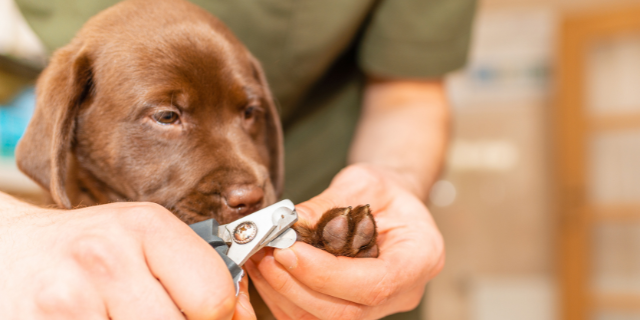Unfortunately, nail trim phobias in pets are reasonably common. They can result from a negative experience (such as a nail accidentally being cut too short previously) or may develop in naturally anxious pets or puppies who didn’t receive adequate positive socialisation or handling experiences.
How can you help your pet that has nail trim phobia?The most crucial first step is to avoid forcing your pet into a nail trim by overpowering them. Although this approach might seem effective initially, it often leads to increased fear and anxiety in your pet over time, making the problem worse. If your pet urgently needs a nail trim, it’s usually best to book them for one or two nail trim procedures under sedation in the veterinary clinic to get their paws in a more comfortable state whilst starting long-term retraining therapies. 1. Mild casesMilder cases of nail trim phobia can often be improved with a properly performed behaviour modification program. This will involve you retraining your pet’s brain through desensitisation and counterconditioning techniques so that they learn that nail clips are OK. It’s essential to take things slowly with short, positive daily training sessions over weeks to months so that your pet isn’t pushed too hard too soon. Here is a video (and accompanying description) demonstrating desensitisation and counterconditioning. Please remember that any pet can bite if they feel sufficiently threatened, so take care to avoid putting yourself or others at risk of a bite injury. If you are feeling unsure about how to safely work with your pet, please consult us for recommendations on positive method trainers. 2. Moderate to severe casesIn more severe cases, we may need to prescribe short- or long-term calming medications for your pet, so that they can relax enough to respond well to behavioural modification. We will also discuss potential alternative options that may help, such as using a Dremel or training your pet to use a scratch pad voluntarily. For more behavioural assistance, consult our mental-health magnificent team! |
Our Blog
Mira Mar Vet, your local vet in Albany
The dreaded nail trim

